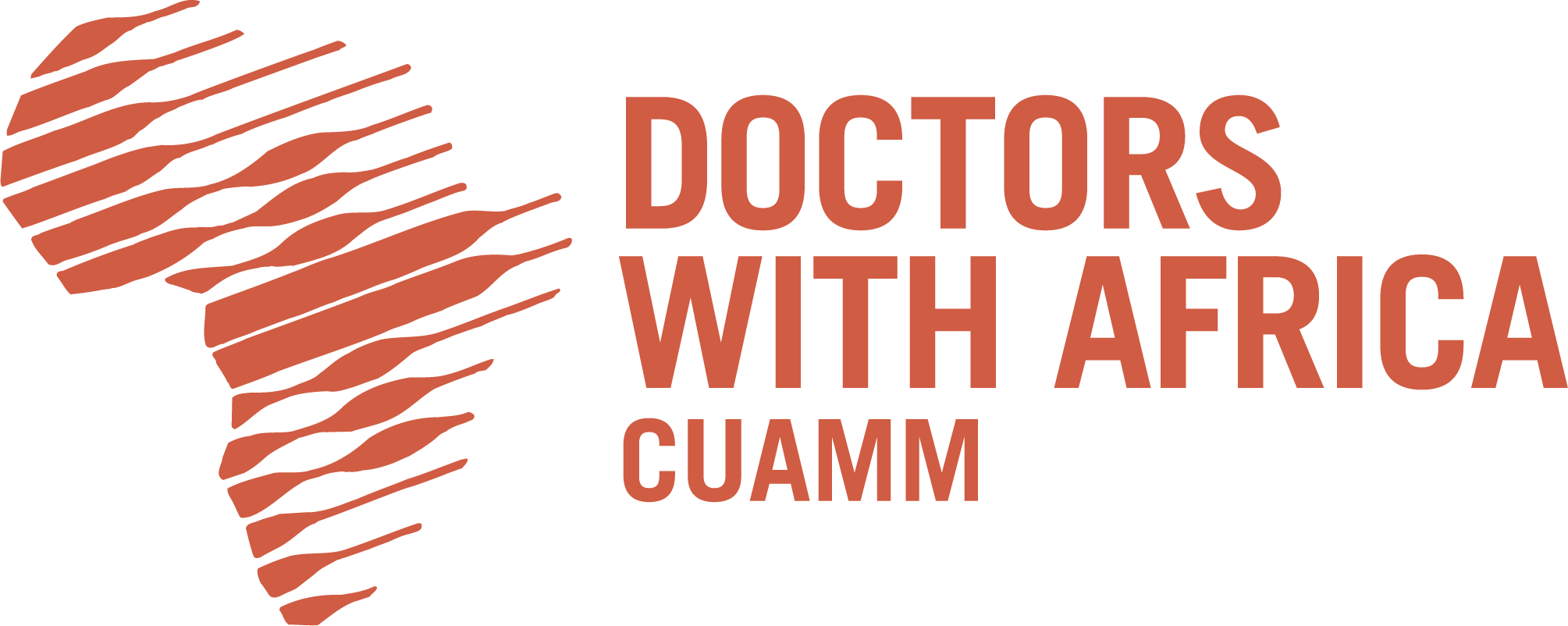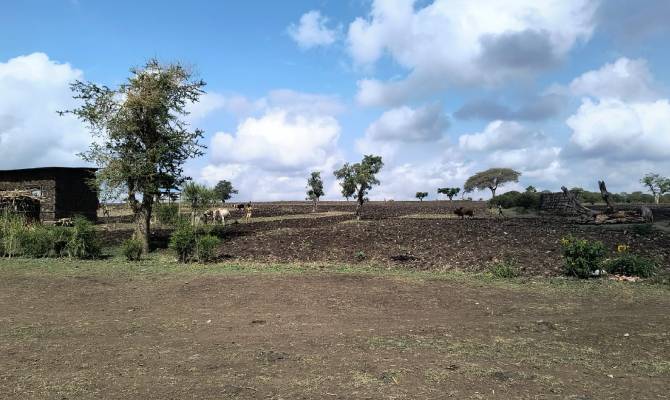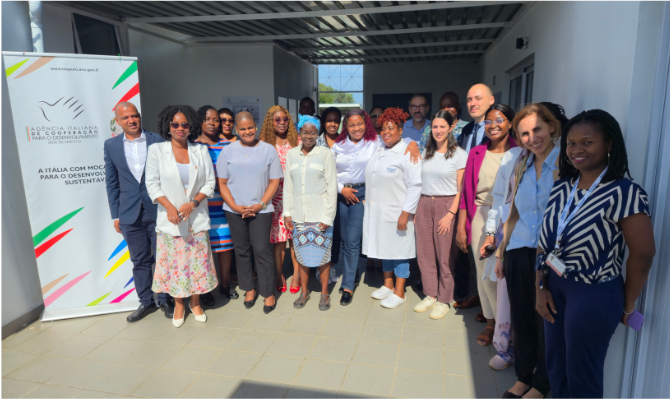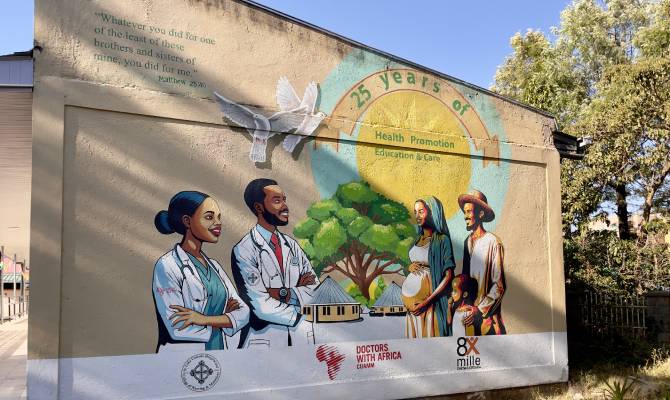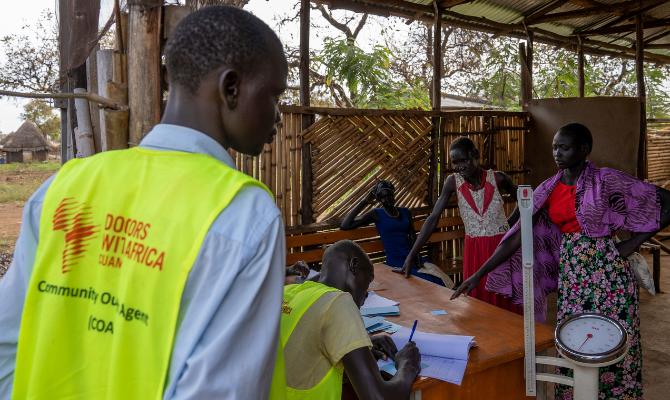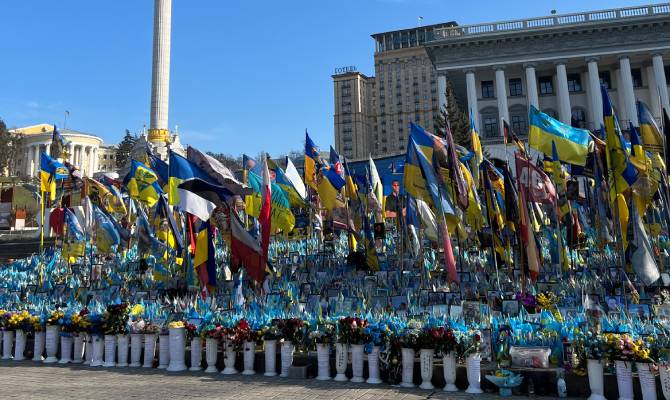The departure from St. Luke Hospital in Wolisso is scheduled for early morning. At one o’clock Ethiopian time.
The time of a people who give great importance to sunlight—for this reason, hours are counted from sunrise. So it’s 7 AM Western time when the Toyota Land Cruiser driven by Hagos leaves the hospital. In the vehicle: three CUAMM medical residents, one student, Sister Martha, and Sister Marie Rein with two nurses: Benjamin from St. Luke and Wase from Gambella.
The first stop is in Goro where we are about to visit Father Joseph’s community. He is an Indian missionary priest from Kerala, in Ethiopia for four years. He is working to improve the development of some villages in the region. He welcomes us warmly into the beautiful mission courtyard, enriched with plants from all over the world. He briefly explains the project to us. After tasting a few freshly picked grape berries from the garden’s pergola, we return to the off-road vehicle, now joined by Emanuel, another Indian priest and Joseph’s confrere, who will be our guides for the day.
We leave Goro heading west. On the bumpy road, the only motorized vehicles are our 4×4 and a motorcycle that take us to destination.
After about 20 km of jolts and shakes—and more than an hour of travel—we reach the final destination: Galiye Rogda, one of five villages inhabited by a population that, by language, traditions, and somatic traits, shares little with the other inhabitants of the region.
Perhaps it’s not exactly the “last mile”of CUAMM’s cooperation work, but it is still many miles away from the main road and basic services we might consider essential to ensuring the physical, mental, and social well-being of every human being lack. Services that will soon become even more inaccessible with the impending rainy season.
The village suddenly appears in the highland countryside—a cluster of circular huts made of wood, straw, and mud, surrounded by dark brown fields indicating the plowing season. The silence is absolute. In the foreground, everything seems frozen, captured in the short shadows of the equatorial sun. But life flows, and its rhythm is revealed in the background, with the slow and steady advance of oxen pulling wooden plows.
Waiting for us in front of the small tin school building used as a clinic is a group of curious, proud children, accompanied by a few women watching over them from a short distance. The men, all farmers, are in the fields. Soon, as word spreads about the doctors’ arrival, they will abandon their work and gather at our post.
This is not the first time doctors from the “city” have come to the village. In fact, in the past six months, Father Joseph and his congregation have already organized two similar events.
Still, our arrival is met with curiosity and suspicion. The children gaze at us from a safe distance and quickly look away when our eyes meet. Some hide. The youngest cry, protected by the older ones. A few are bold enough to touch us before darting back behind the women, who smile from the sidelines.
A few minutes after the initial meeting, people begin to gather. It’s time to begin the consultations.
Inside the little schoolhouse, three medical stations are set up: doctor and nurse side by side, with stethoscope, pen, pulse oximeter, blood pressure cuff, and a portable ultrasound device.
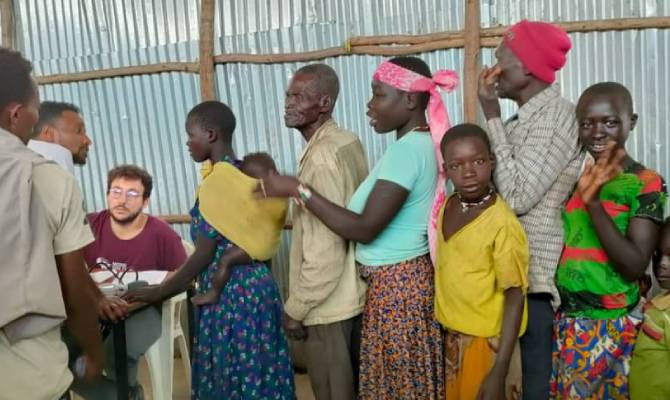
The line in front of each station grows.
The flow of people is well managed by the missionary priest and two nuns from a nearby health center who have silently joined our group. From Costanza’s desk, the pediatrician, a dense and orderly line of children extends—pressed one against another, each clutching a small slip of paper where their medication prescription will be written according to their symptoms.
Our few words of Oromiffa often help us understand the main issue. The nurses are always ready to step in and assist us in Amharic.
Headaches, nausea, coughs, stomachaches, vomiting, diarrhea, fatigue, shortness of breath. Some wounds to be treated. Many children are malnourished.
“My whole body has been hurting for two years.”
“I know—you work too much.”
Despite the early skepticism, there is room for some jokes.
An accurate diagnosis isn’t always possible. But everyone leaves with a prescription. Some with painkillers, some with vitamin or iron supplements, deworming medication, only a few with antibiotics or corticosteroid therapy.
Outside the school/clinic, the nuns dispense the prescribed medications to each patient.
Not everyone is completely satisfied—some perhaps wanted more time to be listened to, feel they weren’t understood. And perhaps they weren’t. Their health issue may need to be addressed in other ways. Rural medicine is this, too: complex problems, very few resources, interpretations—sometimes right, sometimes wrong. Sometimes only short-term solutions.
Most of the patients, however, seem content with this brief encounter.
We expected 300 people, and not many fewer came. When the crowd starts to thin and the last few latecomers approach the tin door, the sun is already past its zenith. After that, the clinic closes. The patients are gone. We all look each other in the eye. A laugh.
We’re not yet fully aware of what we’ve just experienced. But this isn’t the time to process emotions. We gather our tools and begin the return to Wolisso.
We’re aware not of having made a great medical contribution, but perhaps of having taken a small step to bridge the gap between the city and the countryside, to counter the trend of abandoning rural areas in a country where the main economic resources are used to build towers and beautify the tree-lined avenues of the capital.
Perhaps a small gesture from those with more privilege toward those with less—or none at all—can shift the focus and, for a moment, center individuals and communities for whom being forgotten is often the norm.
The return to Wolisso, which until a few weeks ago we thought of as a remote rural hub in the Ethiopian countryside, now feels like arriving in a chaotic metropolis—reminding us how much in life depends on one’s point of view.
